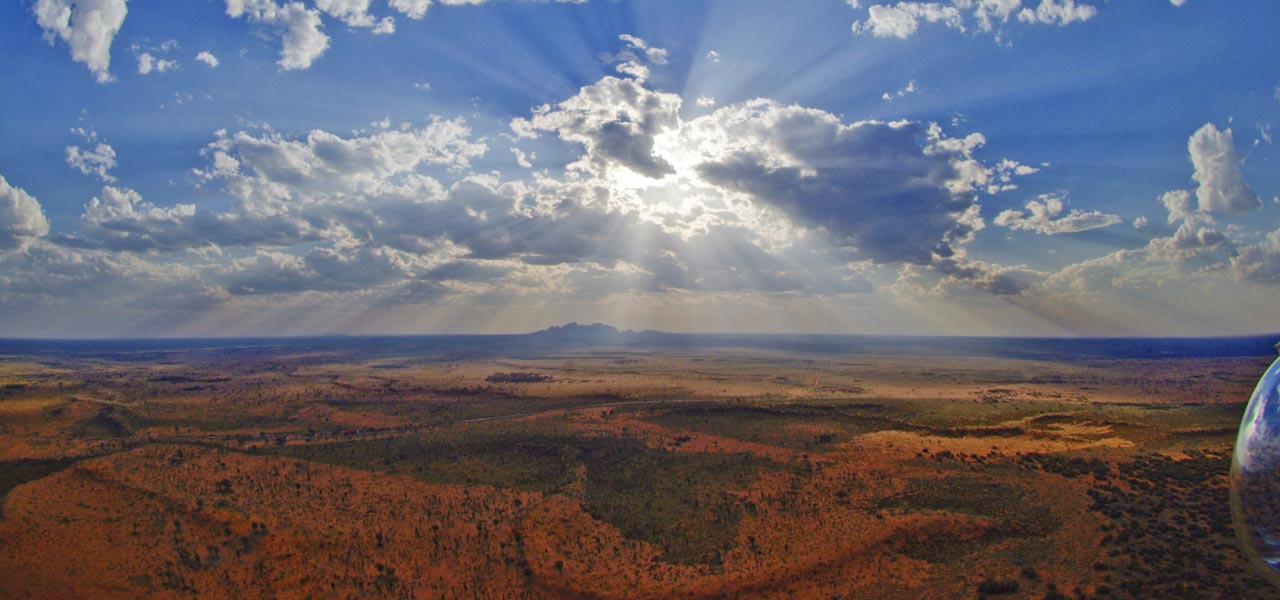Adela�de - Darwin (Outback Australia)
You pass through the country's most famous natural sites, taverns and historic towns, as well as magnificent landscapes that make this route a lift in time.
Named after John McDouall Stuart, the first explorer to cross Australia from north to south round trip, the "Explorer's Way" crosses the country from south to north, from Adelaide to Darwin.
On your way to an adventure you won't forget any time soon
Carte
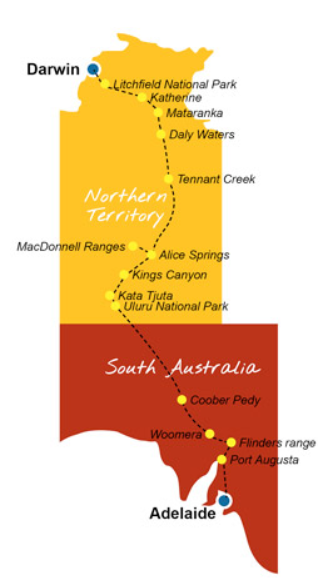
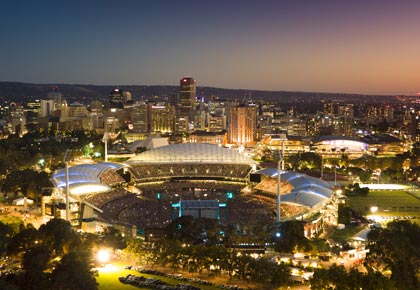
Stage 1: Adelaide
Welcome in Adelaide. This city recognized as the capital of Australian wines will delight you with its pleasant little alleys, historic buildings, and its many cafes and restaurants.
This vibrant city will charm you with its unique parks and gardens in Australia.
Camping:
Adelaide Caravan Park: Powered from $ 44 per night
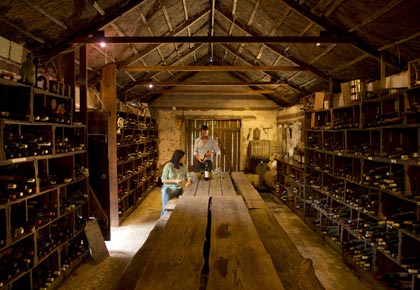
Stage 2: Adelaide � Port Augusta
Leave the capital of South Australia, Adelaide, heading north for Clare Valley, a wine region with a cool climate known for its Rieslings. Don't hesitate to stop by the many local wineries for a tasting.
Continue north through Melrose, then to the Flinders Ranges mountain range, a must stop for hikers. Port Augusta is a great base for exploring the Flinders, as well as Mount Remarkable National Park.
Camping:
Port Augusta Holiday & Caravan Park: Powered from $ 36 per night
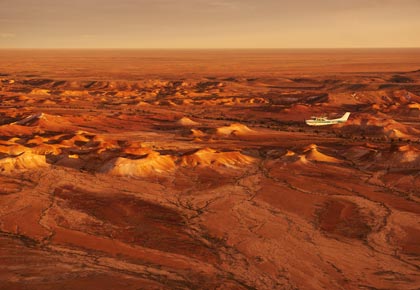
Stage 3: Port Augusta and Flinders Ranges
The Flinders Ranges is one of the oldest landscapes on Earth. Spectacular in every sense of the word, it is a region of craggy peaks, deep gorges lined with trees, parched streams and red earth… One of the most famous sites is the “Wilpena Pound”, a magnificent natural amphitheater. that will leave you speechless.
Explore the “Aboriginal Dreaming Trail” to learn more about the Aboriginal population. This tour can be done with an Aboriginal guide or alone. From gray blue at dawn to deep red at dusk, Flinders change color dramatically throughout the day.
Likewise, the Flinders are home to brightly colored parrots, wallabies, kangaroos and emus, as well as Australia's largest bird of prey, the wedge-tailed eagle, which reigns supreme over these lands.
Camping:
Wilpena Pound Campground: With electricity from $ 25 per night
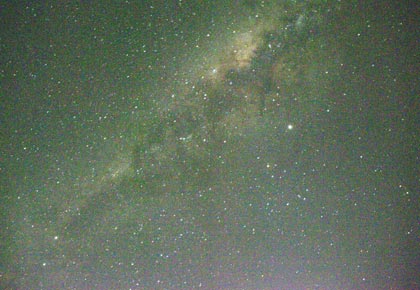
Stage 4: Port Augusta - Woomera
The small town of Woomera was established in 1947 as a rocket and missile test site. Today it is open to visitors.
You can learn more about the city's history at the "Missile Park" and the "Heritage Center". To cut the road, spend the night in Woomera.
Camping:
Woomera Traveller's Village and Caravan Park: With electricity from $ 25 per night
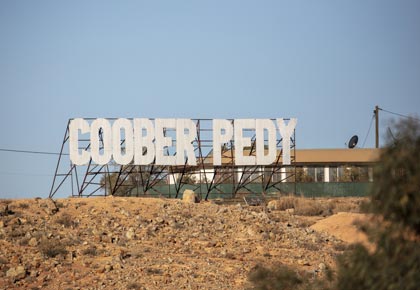
Stage 5: Woomera � Coober Pedy
Coober Pedy is a mining town responsible for approximately 85% of the world’s opal production.
The local people have created a real underground city there, to escape the excessive heat of the desert .
Camping:
Big4 Stuart Range Caravan Park: With electricity from $ 40 per night
If you need more information for your next trip in the Outback, please contact us

Stage 6: Coober Pedy � Parc National Uluru � Kata Tjuta
Today you take the road to Uluru - Kata Tjuta National Park.
Once you arrive at your destination, pay a visit to the cultural center, there you will find all the information about the park, the activities to do and the aboriginal culture.
Tonight you stay at Abers Rock Resort, the only place on site that allows all visitors to stay one night or more.
Camping:
Ayers Rock Campground: With electricity from $ 50 per night
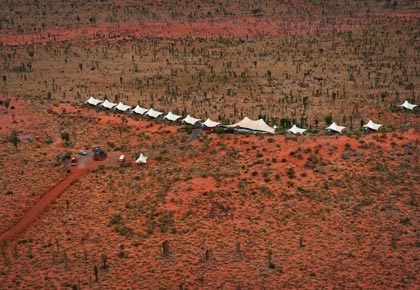
Stage 7: Uluru - Kata Tjuta
You spend the day visiting the national park. There are different ways to discover Uluru, here are a few examples.
On foot, going around the circumference of the rock accompanied by an Aboriginal guide. Indeed, the Aboriginal culture forbids the climb to the sacred site, but that does not prevent the hordes of visitors from following the path of ropes set up to reach the summit.
By helicopter for an exceptional view of this site and the immense desert.
By camel, introduced in the middle of the nineteenth century as the best way to get around. Today is the perfect means of transport for a few hours in the desert.
By Harley Davidson, for sunrise or sunset or just for an adventure in the Australian desert.
And finally, in silence at sunset, time for a dinner of regional products, followed by a guided night tour under the stars.
Do not miss a visit to Kata Tjuta, also known as the Olgas, where many walks are possible. One of the most magnificent hikes is the Valley of the Winds walk, which is a must-see on this site.
Camping:
Ayers Rock Campground: With electricity from $ 50 per night
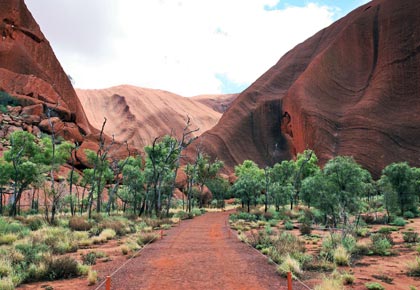
Stage 8: Parc National Uluru � Kata Tjuta � Kings Canyon
Today you explore Kings Canyon and Watarrka National Park, so called by the Luritja people over 20,000 years ago. "Watarrka" means "vegetable umbrella", it proliferates in this fabulous landscape. This national park is an important place for the conservation of the territory. The many gorges, pits and cracks make it an eco-system abundant with hundreds of plants and animals.
Thanks to deep gorges, ferns, palm trees and other plant spaces are everywhere. It is a magical place in the middle of the desert, where you wouldn't expect such a green spectacle.
Kings Canyon offers many walks, both for hobbyists and avid hikers.
Camping:
Kings Canyon Holiday Park: Powered from $ 25 per night

Stage 9: Kings Canyon � Alice Springs
Today you continue to Alice Springs. Once on the Stuart Highway, continue north, you are on the road that connects Darwin and Port Augusta. If you have time, stop at the “Henbury Conservation Reserve” to observe the 12 craters created by a meteorite 4,700 years ago.
You can even camp there if you want. A little further, the "Breakaways" hills are particularly beautiful in the early morning, and in the late afternoon when the sun's rays on the rocks give them rainbow reflections.
Alice Springs is now a hundred kilometers away.
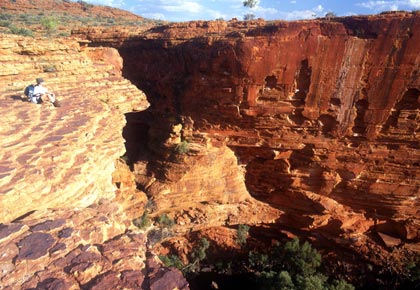
Stage 10: Alice Springs and MacDonell West
Alice Springs is the most famous town in Australia's Outback, and is also known as the Capital of Aboriginal Art. The main sights of this small town are eclectic and unique in Australia. Visit the arid Botanical Garden, learn about local stories in the historic setting of the Telegraph Springs Station, the Royal Flying Doctor base, the Air School and the Anzac viewpoint.
Don't hesitate to take a day trip to the West MacDonnell Ranges, which includes sinkholes and gorges. This mountain range stretches for hundreds of miles on both sides of Alice Springs.
Do not forget to pass by "Simpsons Gap" to see the permanent water points, as well as by "Standley Chasm", impressive for its vertical walls and the fiery ocher colors reflected by the midday sun.
If a little dip is in order, you can go to Ellery Creek Big Hole, Ormiston Gorge, Glen Helen Gorge or Redbank Gorge. All of them offer a refreshing way to end the day.
You can also visit the Ocher Pits, used by the locals as a quarry for ocher pigments.
Camping:
Big 4 MacDonnell Ranges Holiday Park: Powered from $ 55 per night
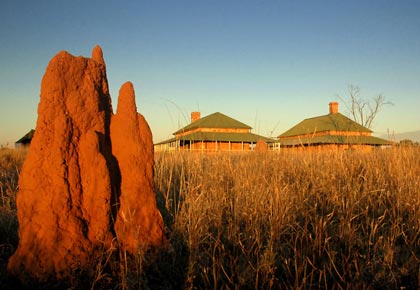
Stage 11: Alice Springs � Tennant Creek
As you head north the landscapes change from desert to vast plains.
Wycliffe Well is known as the Australian capital of UFO sightings. This is your opportunity to stop by the local coffee shop to keep up to date with paranormal activity from around the world: the walls of the restaurant are covered with newspaper clippings attesting to this.
You then continue to the Devils Marbles, a sacred place known as Karlu Karlu by the people of Warumungu. These huge ancient granite boulders are strewn across a wide, shallow valley. They continue to change and crack under the weight of time. Don't forget your camera to capture the setting sun over this landscape.
In the same region, John Stuart McDouall names a stream after his friend John Tennant. Today, Tennant Creek is the main town in the region. It was one of the last places of the Australian gold rush in the 1930s, and many still believe there is still gold to be found in the area. The history of the town's gold rush can be uncovered at the many sites around town such as the Mine Battery Center. To the north of the city, “The Pebbles” (Kunjarra), site of sacred granite blocks, and the Place de la Danse des Femmes, site of the Warumungu people, are the two best places to see the sunset.
Camping:
Tennant Creek Caravan Park: Powered from $ 30 per night
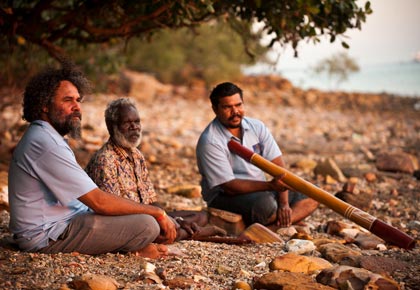
Stage 12: Tennant Creek � Daly Waters
Its famous Beef and Barra is as well known as the pub itself. This place is steeped in history, and you will soon find in the establishment and in its grounds memorabilia that reveal the colorful history of the pub and those who passed by. This place is worth lingering, so set up camp there.
Steeped in history, the Daly Waters Pub is a popular place to spend the night with your motorhome. This is the place where travelers who pass through this region have stopped for hundreds of years.
Before you leave town, learn about the local Aboriginal cultures. Go to the Nyinkka Nyunyu Culture and Arts Center, which showcases the stories and art of the locals. The Julalikari Arts Center is a lively place where you can rediscover the work of Aboriginal women. At the Three Ways (Les 3 Chemins), where the Barkly highway to Queensland crosses the Stuart Highway, take the time to reflect on the memorial of the Reverend John Flynn, founder of the Flying Doctor Service.
Camping:
Daly Waters Historic Pub: Powered from $ 16 per night (per person)
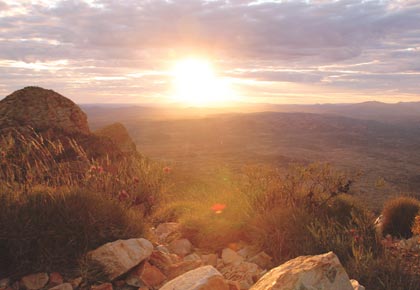
Stage 13: Daly Waters � Mataranka
The first stop today is Larrimah, a historic outpost that was established in 1940 during the war to serve as an airfield for Gorrie.
Larrimah was the head of the Northern Australia Railroad, and also a camp used by the Australian military. Today you can walk through the Military Transport Museum to see WWII photos and interpretive texts.
The next stop is the small town of Mataranka, which is well known for its thermal pool. The township is small, with a population of around 250, but it is a very pleasant place to spend a night or more. The small town has good infrastructure, with quality campgrounds and a super market.
The area was made famous with the novel "We of Never Never", a book written in 1908 by Jeannie Gunn about Elsey Station. It was later adapted into a film.
Stroll through Elsey Cemetery, and you will see the graves of many of the characters from the book. And of course don't forget to take a bath in the thermal pool of Mataranka. Fed by spring water from the Daly and Georgina Basins, the pool has a sandy bottom and is surrounded by a forest of palm trees. Its waters are 34 degrees all year round.
Camping:
Mataranka Territory Manor Motel and Caravan Park: With electricity from $ 30 per night
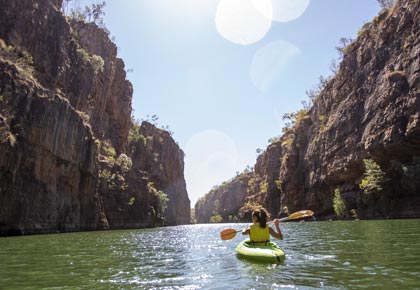
Stage 14: Mataranka - Katherine
Today you drive back to Katherine, which will serve as your base for exploring the area. 30 kilometers south before arriving at your destination, take the turning point for the Cutta Cutta Caves Natural Park. Formed millions of years ago, these limestone caves are still growing, and constitute a habitat for fauna and in particular very rare bats.
Katherine is the fourth largest city in the Northern Territory. It is an excellent base for exploring the surrounding area. The vast Nitmiluk National Park (Katherine Gorge) can be reached from Katherine via two roads. One leads to Nitmiluk Gorge, a network of 13 gorges that were carved by the Katherine River. A first flight in a helicopter is a great way to admire the gorge from above (ask at the park visitor center).
Another very popular way to admire the scenery is by water: either by canoe or by joining a guided river cruise. Either way, you pass steep cliffs, ancient Aboriginal paintings, and sandy beaches where freshwater crocodiles have established their nests. About 40 kilometers north of Katherine is the other branch to the park, which leads to the huge pool at Leliyn Falls (Edith Falls), a great place for a refreshing dip. There is even a campsite to spend the night there.
Camping:
Edith Falls Leilyn Campground: Without electricity from $ 9 per night
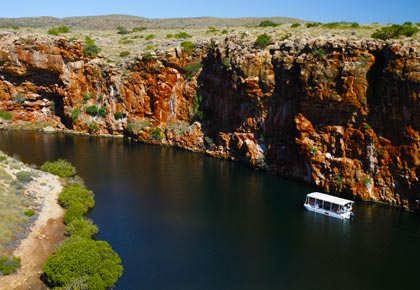
Stage 15: Katherine area
Today you explore the world-famous national park, Nitmiluk Park. It covers a large part of the region, including 13 gorges carved by the Katherine River.
Start your day at the tourist hub of the park, then take a river cruise to see sheer cliffs, sandy beaches, and rock walls painted by the Aborigines.
You can also rent a canoe and explore the gorges on the water, which gives you a different perspective of this place. You can also fly over the park by helicopter or on foot. In the evening, you return to Katherine for a traditional dinner in the grounds of the Outback Museum. Accommodation in Katherine includes hotels, hostels and campsites.
Camping:
Katherine Holiday Park: Electricity $ 40 - $ 51 per night
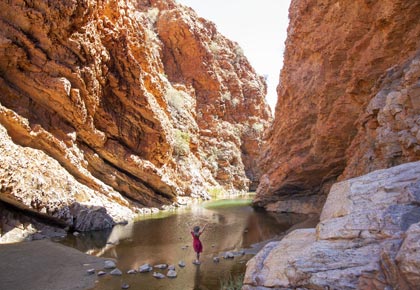
Stage 16: Katherine � Litchfield National Park
Further on, you reach the historic town of Pine Creek. It was an important transportation hub during the Gold Rush of 1870 and during World War II.
Exit the Stuart Highway and follow signs to Bachelor, a small town that serves as the gateway to Litchfield National Park. Thanks to the beauty of this park and being close to Darwin, Litchfield is a popular spot with day trippers who come from the city for a dip in Frorence Falls, Buley Rockhole and Wangi Waterfalls.
After refreshing yourself in all those natural pools, continue to the curious magnetic termite mounds, or take the 4x4 trail towards the rock formations of Lost City and Tjaynera Falls.
Note that many hiking trails start from the most popular sites. Look for signs in parking lots. The walks vary from 1 to 3 kilometers, or for the more experienced walkers, complete the 39 kilometer loop in several days. There are many places throughout the park to pitch your tent. Some sites are accessible on foot, others by 4x4 only.
Camping:
Litchfield Tourist Park: Powered from $ 39 per night
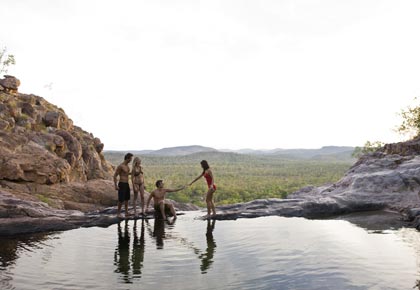
Stage 17: Litchfield National Park � Darwin
On your way to Darwin, stop at Berry Springs Historic Nature Park. A recreational camp for Army Personal Forces during World War II, today it is a popular spot for barbecuing and a dip in freshwater pools.
Near the nature reserve, you can get up close to the local fauna. Take a treetop walk around a natural lagoon and walk through the aquarium to see animals, including saltwater crocodiles in their natural habitats.
Finish the Explorer's Trail in Darwin, Australia's northernmost capital city. It is also, according to Lonely Planet, one of the ten cities to visit absolutely.
You will find yourself in a contemporary multicultural metropolis with outdoor markets, festivals, Asian-influenced cuisine and an outdoor lifestyle.
Camping:
Oasis Tourist Park: With electricity from $ 38 per night



